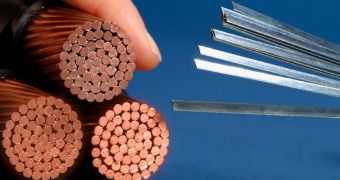Physicists may have finally broken the mystery of an unexplained gap that was discovered in the electronic structures of certain high-temperature superconductors more than 20 years ago. This gap could indicate the presence of a previously-unknown state of matter.
For year, experts have been trying to make some sense of this structure, but the evidence they managed to collect in rigorous studies were inconclusive, and sometime contradictory. But a new research may have finally achieved the long-sought-for breakthrough.
According to the team behind the work, these conclusions provide the strongest evidence to date that the “pseudogap” hints at a new state of matter. Such investigations are important if experts want to find or create superconductors that operate at room temperature.
Once this goal is reached, these advanced materials could finally be used in common applications, such as designing new power grids and electrical circuits. At this point, superconductors are only used in medical imaging, maglev trains and advanced electrical generators.
The reason why they are so avidly researched is that they pose resistance to electrical current passing through rate. Their conductivity is 100 percent, which also means that they lose no energy as heat.
“Our findings point to management and control of this other phase as the correct path toward optimizing these novel superconductors for energy applications, as well as searching for new superconductors,” explains physicist Zhi-Xun Shen, the leader of the research team.
He is based at the Stanford Institute for Materials and Energy Science (SIMES), which is a joint venture of the US Department of Energy’s (DOE) SLAC National Accelerator Laboratory and the Stanford University.
Details of the new investigation were published in the March 25 issue of the top journal Science.
The most important obstacle preventing the rise of superconductors is the fact that even cuprates – materials that gain this property at warmer temperature than absolute zero – still need to be chilled down half-way to 0 degrees Kelvin before they work.
“A clear answer as to whether [the] gap is just an extension of superconductivity or a harbinger of another phase is a critical step in developing better superconductors,” Shen says of the reasons that drove his research team.
The main conclusion of the new study was that electrons found in the pseudogap are not forming pairs, but rather organizing themselves in an elusive order unlike anything physicists have seen before.
The same type of organization lingers on when the material turns superconducting, but previous works were unable to see it because they were looking at electron pairs exclusively. Therefore, the study provides a new direction of research in understanding superconducting materials

 14 DAY TRIAL //
14 DAY TRIAL //